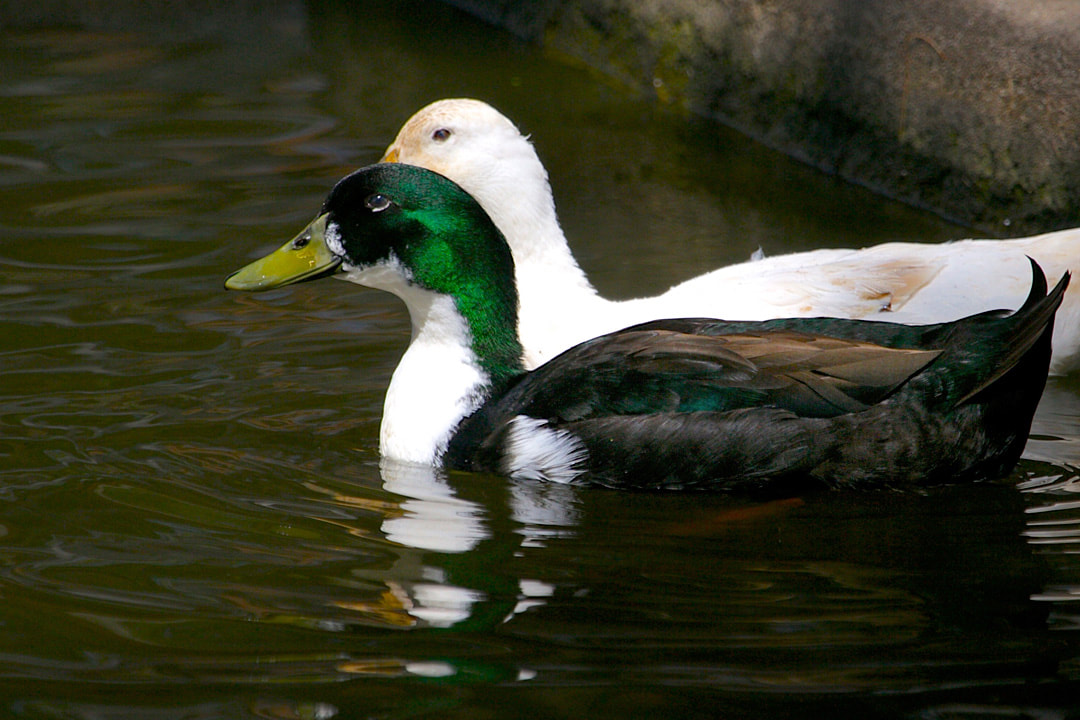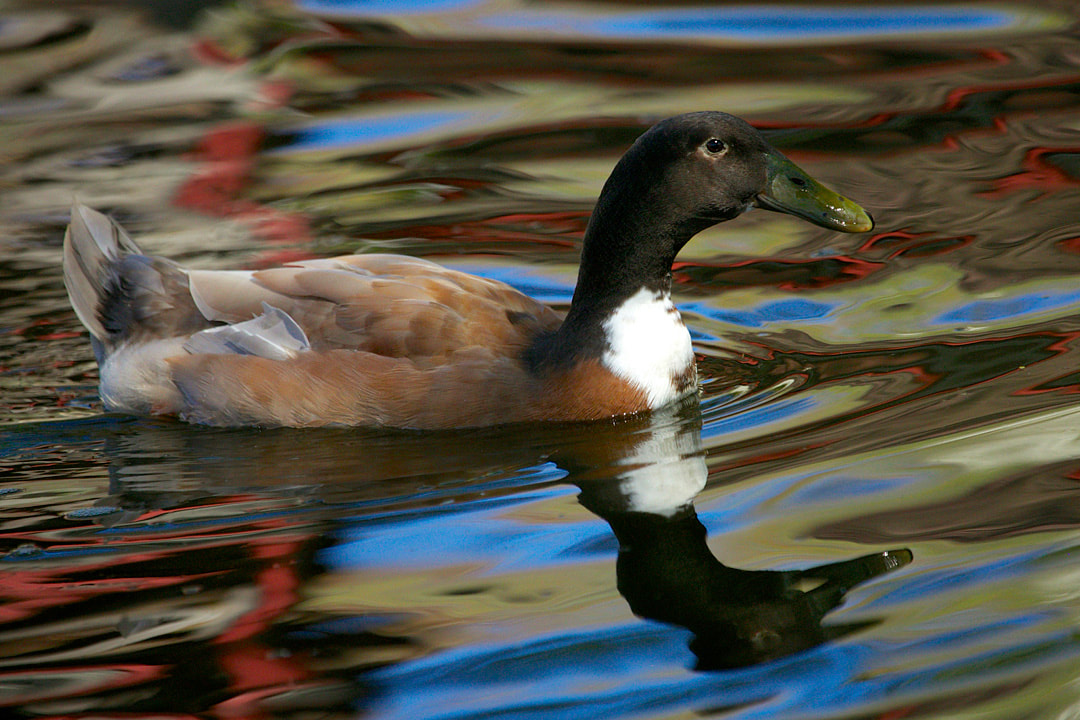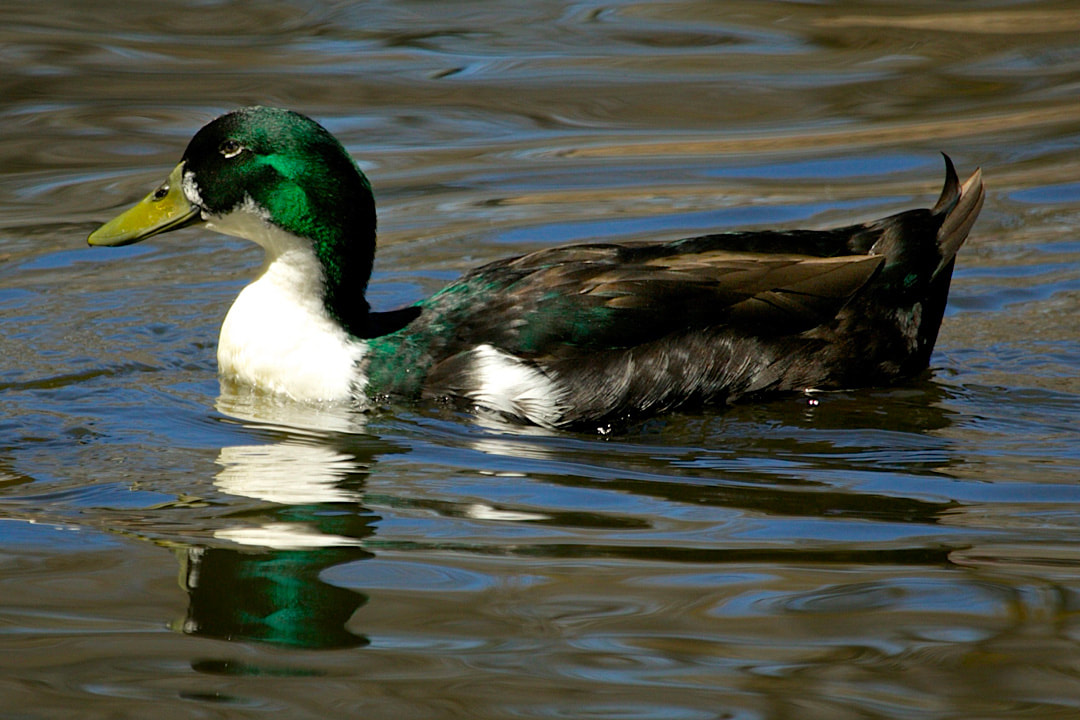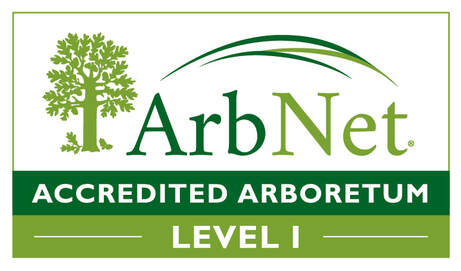Duclair Duck (Anas platyrhynchos)
April showers will not bother this domesticated version of the wild Mallard Duck. They are originally from Normandy in France and get their name from one of the cities in the region. Duclair ducks have calm temperaments, and make very good “beginner’s ducks”. They can easily adapt to different conditions and can eat a diverse amount of food both in water and on dry land. They pick up food on the surface of the ground but they are also known as dabblers meaning they filter feed in shallow water by tipping, or “up-ending”. Duclair ducks can actually see colors and have excellent vision both above and below the water. Like most ducks, they have a protective “third eyelid” or nictitating membrane that helps them see under water and protects their eyes while flying. The Duclair duck may be found in the Walk-Through Aviary.
DESCRIPTION: The Duclair duck is of medium size; males weigh about 6.6 pounds, and females weigh about 5.5 pounds. Their plumage is black and brown with a white bib and a brown or green head. Their eyes are bluish green or green. The outer two primaries on the wings of the Duclair duck are also white, like the bibs.
RANGE: These birds may be found in most of North America in different seasons. They have been found on every continent except Antarctica.
HABITAT: They are primarily domesticated ducks living near ponds on farmlands. In the wild, they nest in open country with shallow, seasonal wetlands and tall grasses to conceal their nests.
DIET: The Duclair duck is an omnivore, they eat aquatic plants, small seeds, grains, insects, small crustaceans, and grubs.
FAMILY LIFE: In the wild, the male Duclair duck will guard their nest by chasing away other ducks. Once the female Duclair duck lays 5 to 8 eggs, the eggs will hatch on average within 26 to 28 days. Duclair ducklings are able to fly within 5 to 8 weeks.
LIFE SPAN: The average life span is 12 years in the wild or in human care.
STATUS: Least Concern
DESCRIPTION: The Duclair duck is of medium size; males weigh about 6.6 pounds, and females weigh about 5.5 pounds. Their plumage is black and brown with a white bib and a brown or green head. Their eyes are bluish green or green. The outer two primaries on the wings of the Duclair duck are also white, like the bibs.
RANGE: These birds may be found in most of North America in different seasons. They have been found on every continent except Antarctica.
HABITAT: They are primarily domesticated ducks living near ponds on farmlands. In the wild, they nest in open country with shallow, seasonal wetlands and tall grasses to conceal their nests.
DIET: The Duclair duck is an omnivore, they eat aquatic plants, small seeds, grains, insects, small crustaceans, and grubs.
FAMILY LIFE: In the wild, the male Duclair duck will guard their nest by chasing away other ducks. Once the female Duclair duck lays 5 to 8 eggs, the eggs will hatch on average within 26 to 28 days. Duclair ducklings are able to fly within 5 to 8 weeks.
LIFE SPAN: The average life span is 12 years in the wild or in human care.
STATUS: Least Concern









